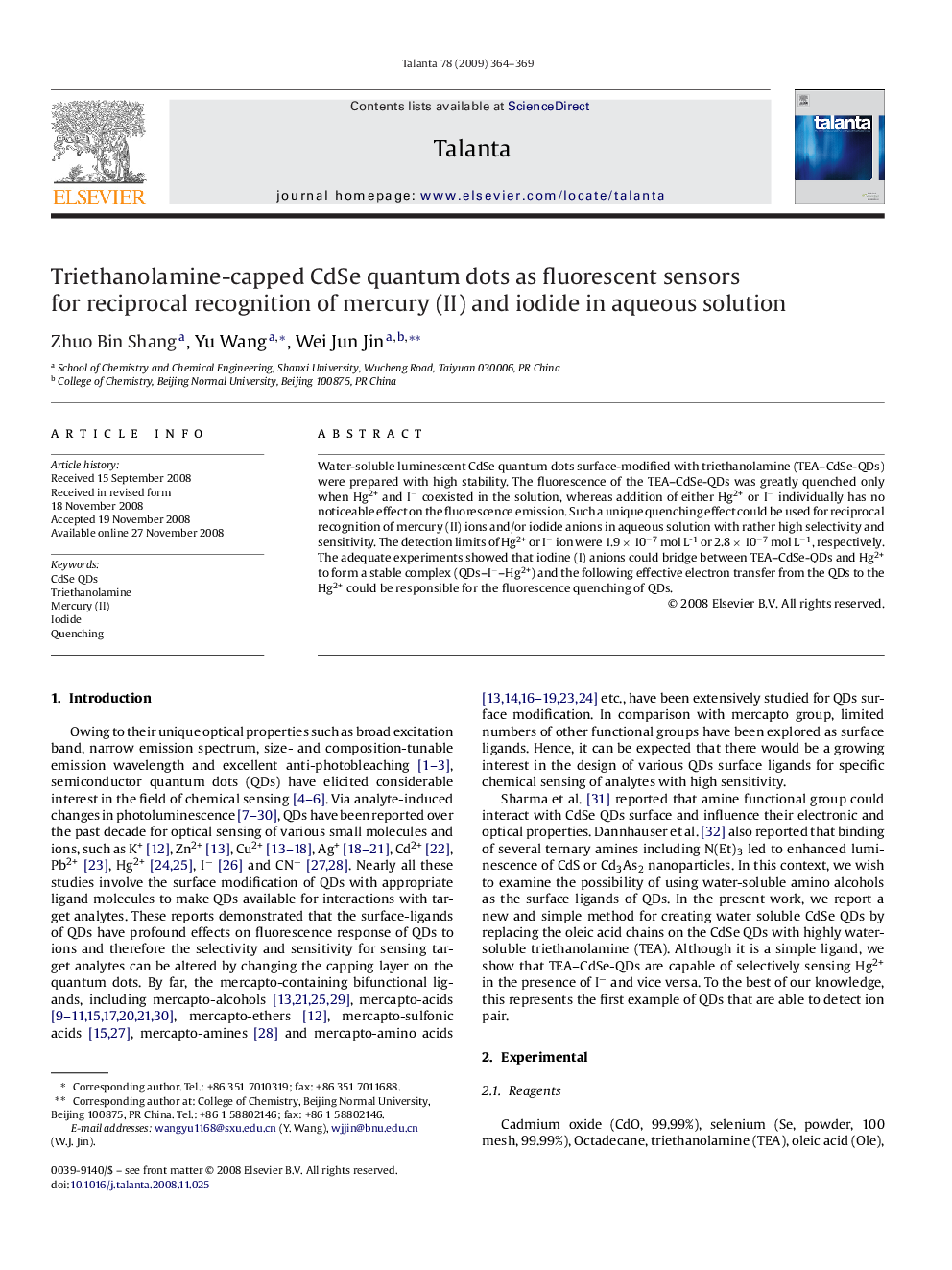| Article ID | Journal | Published Year | Pages | File Type |
|---|---|---|---|---|
| 1246919 | Talanta | 2009 | 6 Pages |
Water-soluble luminescent CdSe quantum dots surface-modified with triethanolamine (TEA–CdSe-QDs) were prepared with high stability. The fluorescence of the TEA–CdSe-QDs was greatly quenched only when Hg2+ and I− coexisted in the solution, whereas addition of either Hg2+ or I− individually has no noticeable effect on the fluorescence emission. Such a unique quenching effect could be used for reciprocal recognition of mercury (II) ions and/or iodide anions in aqueous solution with rather high selectivity and sensitivity. The detection limits of Hg2+ or I− ion were 1.9 × 10−7 mol L-1 or 2.8 × 10−7 mol L−1, respectively. The adequate experiments showed that iodine (I) anions could bridge between TEA–CdSe-QDs and Hg2+ to form a stable complex (QDs–I−–Hg2+) and the following effective electron transfer from the QDs to the Hg2+ could be responsible for the fluorescence quenching of QDs.
